#charles sturt
Explore tagged Tumblr posts
Text
In 1844 Sturt too found odd
the general appearance of the wooded portion of [South Australia] . . . open forest without the slightest undergrowth save grass . . . In many places the trees are so sparingly, and I had almost said judiciously distributed as to resemble the park lands attached to a gentleman's residence in England.⁷
7. Charles Sturt, Narrative of an Expedition into Central Australia, vol. 2, Libraries Board of South Australia, Adelaide, [1849] 1965, pp. 229-30.
"Country: Future Fire, Future Farming" - Bill Gammage and Bruce Pascoe
#book quotes#country#bill gammage#bruce pascoe#nonfiction#40s#1840s#19th century#charles sturt#odd#wooded area#south australia#australia#open forest#undergrowth#trees#parklands#england#comparison#land management
0 notes
Text
Charles Sturt University's $50M Investment Set to Transform Australian Agriculture
Key Takeaways: Significant Investment: Charles Sturt University announces over $50 million investment into agricultural research and facilities. Innovative Projects: Focus areas include sustainable energy, animal health, agricultural technology, and soil health. Strategic Partnerships: Collaboration with industry leaders to drive innovation and sustainability in farming practices. Future-Ready…

View On WordPress
0 notes
Text
i think i'm gonna apply for some of the master of information studies programs.................
#charles sturt looks the best because it looks like it's compulsory to do placement#which i think is great#and i might also apply for uniSA's program because it looks like a good spread of electives#curtain didn't seem like it had a good variety of electives and no inbuilt placement#AAAAAAAAAAAAAAAAAAAAAAAAAAAAAAAA#uni tag#personal
1 note
·
View note
Text
gradually adding to my collection of captain moonlite books like thanos collecting the infinity stones
#missives#how many are there? youd be surprised#ive got gary linnell. paul terry. some weird book i got thats just a compilation of newspaper articles (but not the good ones??)#i just ordered the gay one from a queer bookshop in darlinghurst and i might order the one for kids as well. just for fun#i dont have the calderwood one because hes on my hitlist#captain moonlite#im counting down the days until that one dude from charles sturt uni releases his phd to the public so i can hate read it
1 note
·
View note
Text

学历认证,国外学历如何认证,遇到挂科,未毕业,第三国学历,顾问【微信469405244】查尔斯·斯德特大学毕业证样本 CSU (Charles Sturt University)毕业证成绩单#澳洲文凭#成绩单信封#大学offer#学生卡#留信留才入库认证#wse认证
#学历认证,国外学历如何认证,遇到挂科,未毕业,第三国学历,顾问【微信469405244】查尔斯·斯德特大学毕业证样本 CSU (Charles Sturt University)毕业证成绩单#澳洲文凭#成绩单信封#大学offer#学生卡#留信留才入库认证#wse认证
0 notes
Text
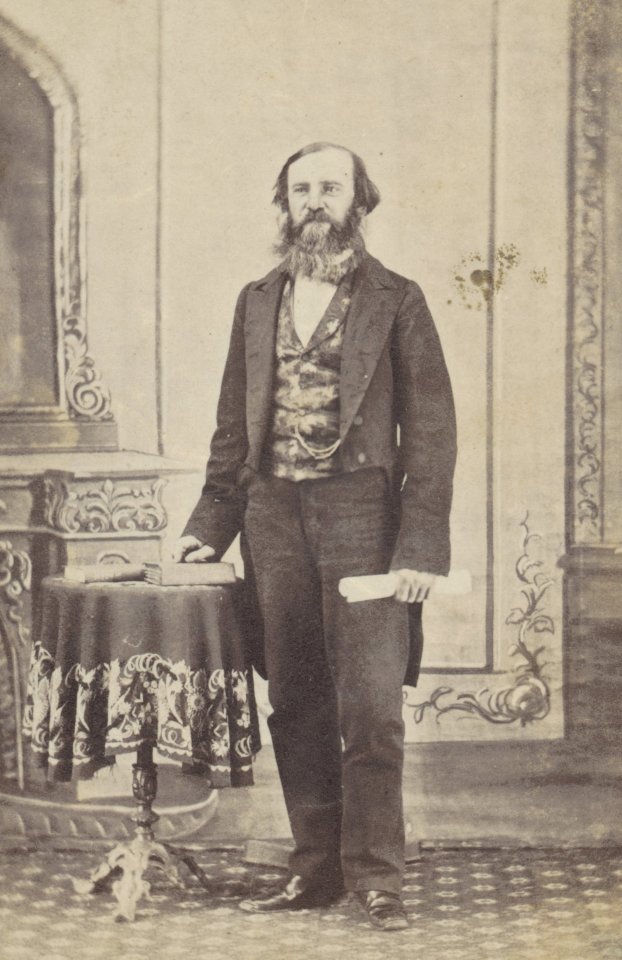
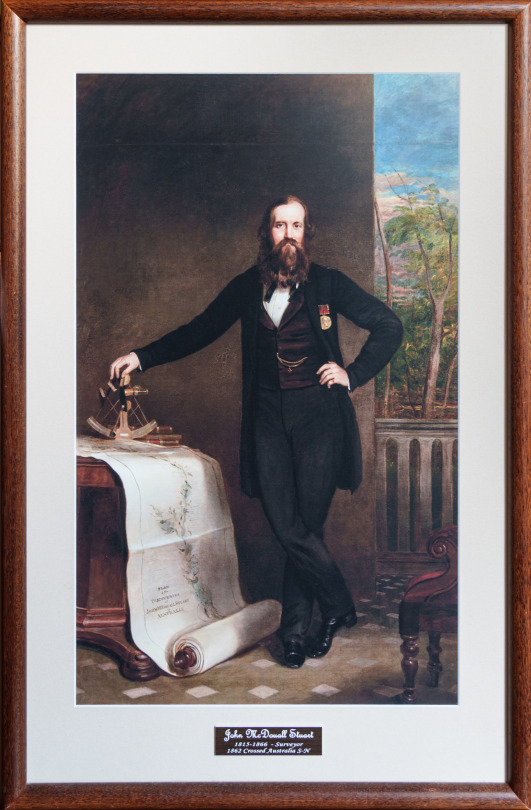
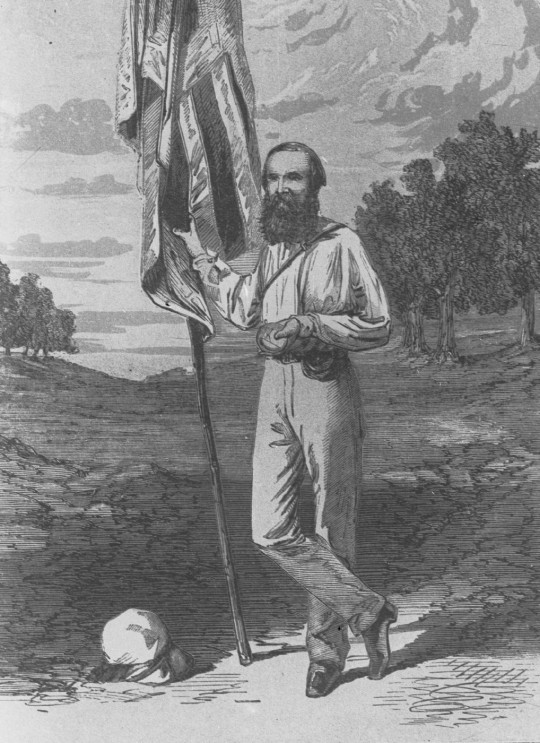

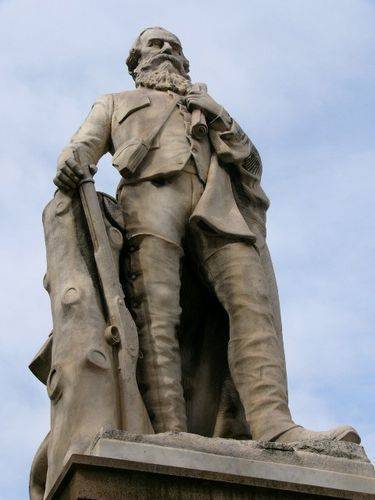
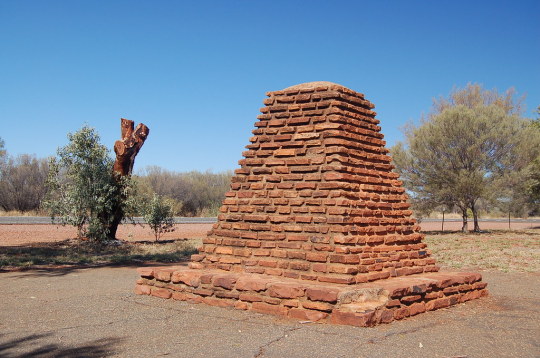
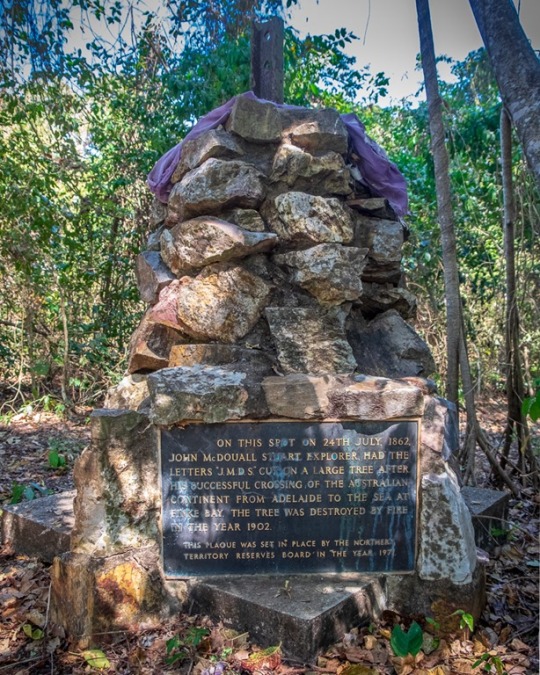
On September 7th 1815, explorer John McDouall Stuart was born in Dysart, Fife.
Descended from a family steeped in military service, Stuart was born in in a sixteenth-century home which now houses a museum in his honour, as seen in the pic. He was the son of army captain William Stuart and his wife Mary (née McDouall). Orphaned in his early teens, he attended the Scottish Naval and Military Academy, Edinburgh, and graduated as a civil engineer.
At the age of 23 he embarked on the Indus from Dundee, arriving at Holdfast Bay, South Australia, in January 1839. He entered the Government Survey Department and, despite primitive conditions in survey camps, found that nomadic life in the bush appealed to him. A man of small stature, his life became a constant battle against ill health and poverty. Assigned as draughtsman for the 1844-46 expedition of Captain Charles Sturt into the interior, Stuart gained valuable experience and received his leader’s full approbation. Sturt’s failure to reach the centre of the continent inspired Stuart’s later achievements.
Returning to Adelaide in January 1846, Stuart was incapacitated with scurvy for twelve months and moved to Port Lincoln for health reasons, while recovering he worked for fellow Scot and shipmate James Sinclair on his properties and tutored the Sinclair children.
In 1854 William Finke and the Chambers brothers, James and John, engaged him to survey leases and prospect for minerals in the northern Flinders Ranges. Between May 1858 and January 1860 Stuart led three expeditions into the Lake Eyre region, seeking new grazing lands and minerals for his sponsors.
In contrast to Sturt, Stuart travelled quickly with limited supplies. Horses were his only means of conveyance. On his first attempt to cross the continent, he reached the geographical centre of Australia on 22nd April 1860, accompanied by two companions and twelve horses --- a feat later described as ‘the greatest and pluckiest exploration ever accomplished’. He tried again the following year but it was not until 1862 that he finally made it to the northern shore.
In poor health Stuart returned to England in 1864, nearly blind and with a broken constitution. He died on 5th June 1866, a forgotten hero. He was buried at Kensal Green Cemetery, London, with a memorial stone erected by his sister Mary.
As a result of Stuart’s expeditions, the nature of the Red Centre was revealed, South Australia gained control of and settled the Northern Territory, and vast areas of the interior were opened up for European settlement. In 1872 the Adelaide-to-Darwin Overland Telegraph Line was completed along Stuart’s route.
His statue was erected in Victoria Square, Adelaide in 1904 and Central Mount Stuart, the Stuart Highway and Stuart Range are named in his honour. The John McDouall Stuart Society was founded in 1964 by descendants of his companions to perpetuate his name and achievements.
A second statue of Stuart can be found in Alice Spring. The statue has been hounded by controversy since it was gifted to the Alice Springs Town Council in 2010, with some saying the work is culturally insensitive. Protests accuse him of not asking permission to enter the land and of killing Arrernte people."You came to Mount Hay and you killed our mob," a letter from Aboriginal elders said. "You went to Attack Creek and you killed more of our mob. This is murder and we can't forget it." it continued.
The Australian Aboriginal singer Warren H Williams also spoke at a protest rally, mocking the size of the gun and calling for the statue to be removed.
"This fella has destroyed both Arrernte and Warramungu [people]...look at the statue, it's a big gun," he said.
"They put a statue up of him, but never asked anybody, even the white people in this town if they can put it up..."
There are numerous memorials to Stuart around South Australia.
8 notes
·
View notes
Text
Charles Sturt uni has a potential vaccine for beak and feather disease in the works but needs some help with funding. If any of you can support it please do!
3 notes
·
View notes
Text













Arrivals & Departures . 11 January 1930 – 07 January 2015 . Rodney Sturt Taylor
Rodney Sturt Taylor was an Australian actor. He appeared in more than 50 feature films, including Young Cassidy (1965), Nobody Runs Forever (1968), The Train Robbers (1973), and A Matter of Wife... and Death (1975).
Taylor was born in Lidcombe, a suburb of Sydney, to a father who was a steel construction contractor and commercial artist and a mother who was a children's author. He began taking art classes in high school, and continued in college. He decided to become an actor after seeing Laurence Olivier in an Old Vic touring production of Richard III.
His first film role was in a re-enactment of Charles Sturt's voyage down the Murrumbidgee and Murray Rivers, playing Sturt's offsider, George Macleay. At the time, he was also appearing in a number of theatre productions for Australia's Mercury Theatre. He made his feature film debut in the Australian Lee Robinson film King of the Coral Sea (1954). He soon started acting in television films, portraying several different characters in the 1950s anthology series Studio 57.
He started to gain popularity after starring in The Time Machine (1960), as H. George Wells. He later starred in the Disney film One Hundred and One Dalmatians (1961), voicing Pongo. In one of his most famous roles, he played Mitch Brenner in The Birds (1963), directed by Alfred Hitchcock. By the late 1990s, Taylor had moved into semiretirement. His final film role was in Quentin Tarantino's Inglourious Basterds (2009), portraying a fictionalized version of Winston Churchill in a cameo.
0 notes
Text




Visited the beautiful town of Bathurst last week to see Adam Norton’s ‘The Sign Are Good’ survey exhibition showing at the Bathurst Regional Gallery. A beautifully arranged exhibition curated by Sam Ferris.
In the evening ‘Sci-Fi Night with Adam Norton’ screened Chris Marker’s La Jetée (1962) and The Andromeda Strain (1971) at the Ponton Theatre, Charles Sturt University. Here are a few pics of some of Adam’s works from the show. The exhibition runs till February 2nd – highly recommended.
The Great Geyser Of Titan, 2015, synthetic polymer paint and pigment on canvas.
Crop Circle I, 2006, synthetic polymer paint on board.
Mars Lander, 1997, synthetic polymer paint on board.
TV Tower Blob, 2015, synthetic polymer paint and pigment print on canvas.
0 notes
Text
In 1833 Charles Sturt concluded,
The proportion of bad soil to . . . good in New South Wales, is certainly very great . . . the general want of vegetable mould over the colony [is due] chiefly to the ravages of . . . [fire], whereby the growth of underwood, so favourable in other countries to the formation of soil, is wholly prevented . . . There is no part of the world in which fires create such havoc as in . . . Australia.¹
1. Charles Sturt, Two Expeditions into the Interior of Southern Australia, vol. 1, Public Library of South Australia, Adelaide, [1833] 1964, p. xxviii.
"Country: Future Fire, Future Farming" - Bill Gammage and Bruce Pascoe
#book quotes#country#bill gammage#bruce pascoe#nonfiction#30s#1830s#19th century#charles sturt#soil#nsw#new south wales#australia#fire#land management
0 notes
Text
Wagga Mardi Gras calls for help as top sponsors pull out
New Post has been published on https://qnews.com.au/wagga-mardi-gras-calls-for-help-as-top-sponsors-pull-out/
Wagga Mardi Gras calls for help as top sponsors pull out

Organisers of the Wagga Mardi Gras Festival have made a public plea after the event lost two of its biggest sponsors ahead of its 2025 return to the regional NSW town of Wagga Wagga.
Launched in 2019, next April’s planned event would be the fifth time Wagga has hosted the family-friendly Pride festival that celebrates diversity and equality.
Each year, thousands turn out for the Wagga Mardi Gras street parade and free afterparty at Victory Memorial Gardens featuring music, drag and entertainment.
Festival founder Holly Conroy (above left) said in previous years, major sponsors Charles Sturt University and Coles both made significant contributions to the event’s success.
But without their support, organisers say they may have to cancel next year’s event.
“We need the community’s help to keep the Wagga Wagga Mardi Gras vibrant, inclusive, and accessible to all,” said festival founder Holly Conroy.
Team of volunteers organise Wagga Mardi Gras
Holly said while the event gets council support, it costs a significant amount to hold. The event does not turn a profit and is organised entirely by volunteers around their own full-time jobs.
Costs involved in the event include entertainment, security, road closures, insurance, photography, advertising and equipment hire.
“People are often surprised to learn that the festival is run by a small team of volunteers who work year-round to make it happen,” Holly said.
“But to make 2025 a reality, we urgently need financial and in-kind support from businesses, groups, and people who believe in the power of this event to celebrate diversity and inclusivity in our region.”
Coles said it withdrew 2025 support for Wagga Mardi Gras “to ensure that we are sharing the support that we can provide to other communities”.
“We support and celebrate a variety of regional and metropolitan-based community-led pride events,” a spokesperson said.
“We are continually looking to share our support to demonstrate that no matter how you identify, who you love or where you come from.”
Cancelling Wagga Mardi Gras is ‘last resort’
Holly Conroy said Wagga Mardi Gras is a very important event for her regional community.
She said she’d heard personal stories of queer locals who’d chosen to come out publicly for the first time after attending.
She said the event seems to give “everyone that extra little bit of courage to go out and be themselves” without fear.
“If we do have to cancel, and obviously that’s a last resort and something that we don’t want to do, it’s going to take a safe space away from a lot of people,” she said.
Any business or individual interested in supporting the event can contact the committee’s sponsorship manager.
Get in touch and find out more at the Wagga Mardi Gras website and follow the team on Facebook.
For the latest LGBTIQA+ Sister Girl and Brother Boy news, entertainment, community stories in Australia, visit qnews.com.au. Check out our latest magazines or find us on Facebook, Twitter, Instagram and YouTube.
0 notes
Text
i think i'm going to try and get like a student services job or a library assistant job when i leave my current job. i know that i could totally go for casual teaching work. but....only if i Have to. and i think i may apply for a masters in library and info science. because i want to work with books. i want to work in research. i want to do something with social research. and i feel like librarianship is a good intersection of those three things. idk
#ideally as a job i'd go for an academic librarian job#but curtain uni have a research version of their masters#so does charles sturt#and that's the most appealing bc it would probably set me up well????? idfk#personal#also told dad i'm gonna leave my job#if anyone has any experience in studying librarianship hmu pls#edit: basically if i want to change careers into anything where i can kinda match my teaching salary#(which isn't all that much tbh)#i'll need to study again#just...no matter what i do#because i didn't do a whole bunch of research in my masters#bc it was basically just a BEd condensed into 2 years lmfao#and i was CONVINCED i was going to stay in there for a while LMFAOO
1 note
·
View note
Text
Alcune poesie di Mark Macleod presentato da Jakhongir Mirzo
Foto cortesia di Mark Macleod Il dott. Mark Macleod è uno scrittore e redattore per bambini e professore associato presso la Charles Sturt University. Ha insegnato letteratura per bambini, letteratura australiana e scrittura creativa presso Università in Australia e in tutto il mondo, più di recente in India presso la Mumbai University e la Sikkim University. La sua carriera editoriale si…
0 notes
Text
What do I Need to Study Nursing in Australia?

Given the high demand for nurses, a career in nursing has the potential to be a long one. Studying nursing in Australia can provide you with a strong foundation to pursue a rewarding career of helping others. But you may be wondering: what prerequisites and skills do you need to study nursing in Australia?
We had a chat with Charlize, who came to Australia three years ago from the Philippines. After taking a gap year following high school, she decided to pursue a Bachelor of Nursing at Charles Sturt University’s Bathurst campus.
Read More: https://insiderguides.com.au/what-do-i-need-to-study-nursing-in-australia/
0 notes
Text
Why Regional Australian Universities Are a Top Choice for 2024

When we think of top universities in Australia, institutions in big cities like Sydney and Melbourne often come to mind. However, regional universities are emerging as hidden gems in 2024. Universities like the University of Tasmania, University of New England, and Charles Sturt University offer high-quality education in a more relaxed and affordable setting. These regional universities provide a unique learning experience, making them an attractive option for international students.
Affordability and Quality of Life
One of the biggest advantages of studying at a regional university is the cost. Tuition fees and living expenses in regional areas are generally lower than in major cities. This makes it easier for international students to manage their finances. Plus, the quality of life in regional areas is excellent. Students enjoy a peaceful environment, close-knit communities, and stunning natural landscapes, offering a perfect balance between academics and lifestyle.
Smaller Class Sizes and Personalized Learning
Regional universities are known for their smaller class sizes, which means students receive more personalized attention from their professors. This close interaction helps students feel more engaged and supported in their academic journey. Many regional universities also offer specialized programs that cater to local industries, giving students unique career opportunities.
Overseas Education Consultancy
Deciding to study at a regional university in Australia may not be an obvious choice for everyone. This is where overseas education consultancy services become incredibly useful. These consultants provide in-depth information about regional universities, helping students understand the benefits of studying in these less well-known areas. They can offer insights into the programs offered, the cost of living, and the unique opportunities available in regional universities.
Support from Study Abroad Consultants

Study abroad consultants play an important role in helping students choose regional universities that align with their academic and career goals. They provide guidance on everything from selecting the right course to navigating the visa process. Regional universities often have excellent support services for international students, and study abroad consultants can help ensure that students take full advantage of these resources.
Conclusion
In 2024, regional universities in Australia are becoming more popular among international students due to their affordability, smaller class sizes, and unique learning environments. With the help of overseas education consultancy and study abroad consultants, students can explore these hidden gems and make the most of their academic experience in Australia. If you're looking for a high-quality education in a peaceful and affordable setting, a regional university might be the perfect choice for you.
Also read:
Top Australian Courses for International Students: What You Need to Know
How a Study Abroad Consultant Can Simplify Your Application Process for Australian Universities
0 notes